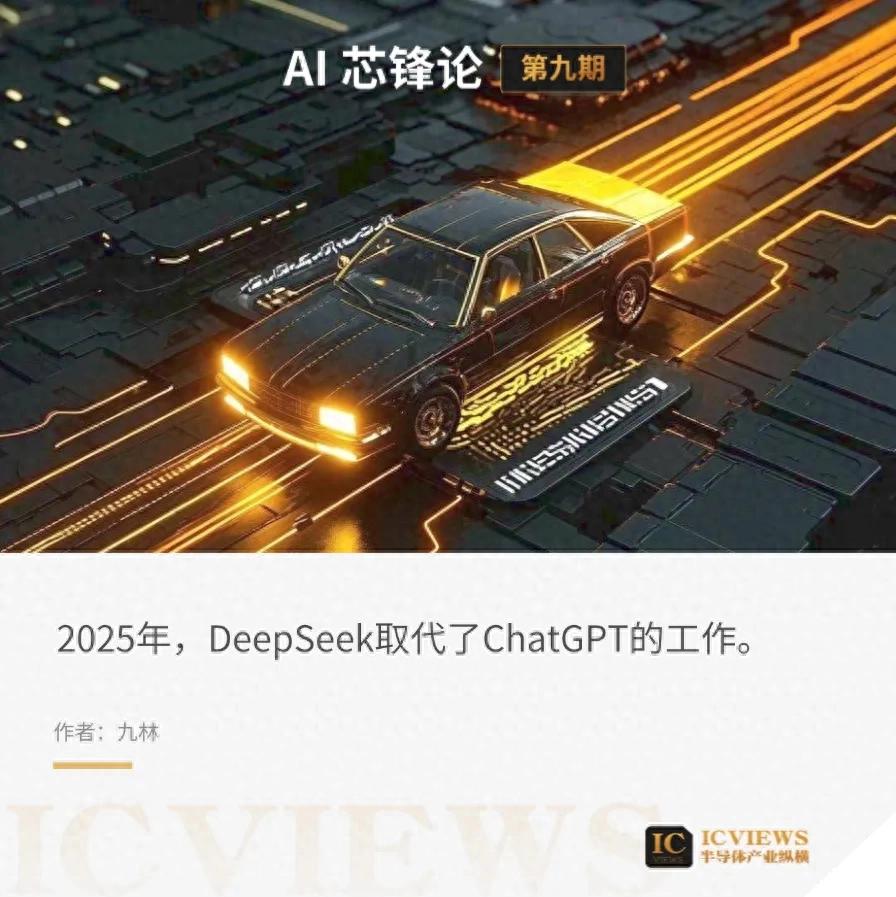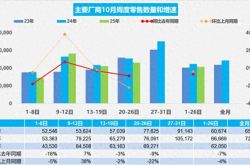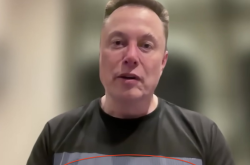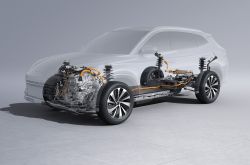Car Chips Embrace the DeepSeek Moment
![]() 03/04 2025
03/04 2025
![]() 662
662

The concept of "moment" originated from neo-republicanism at Cambridge School in the 20th century. In Pocock's "The Machiavellian Moment," "moment" signifies the transformation from a weak, scattered state to a powerful community.
In technology, we've witnessed pivotal moments: the "iPhone 4 moment," where Jobs ushered in a new era with the slide unlock feature, and the "ChatGPT moment," where OpenAI's large model made generative AI the focal point.
ChatGPT emerged in 2023, and two years later, China experienced the "DeepSeek moment." Jokes aside, DeepSeek is now poised to impact the automotive industry significantly.
The advent of DeepSeek can be termed the "DeepSeek moment," symbolizing the democratization of advanced, complex, and costly technologies into low-cost or free products.
Under its influence, car chips have also embraced this moment.
01
Three Entry Points for DeepSeek in Automobiles
Post-DeepSeek, numerous automakers swiftly announced their integration plans. Among them are Geely, Chery, BYD, Great Wall, Leap Motor, Voyah, Dongfeng, IM Motors, Changan, SAIC-GM, GAC, FAW-Volkswagen, ARCFOX, Smart, JAC, FAW Hongqi, FAW Besturn, SAIC Baojun, and ZEEKR.
However, the integration scenarios vary. Considering DeepSeek's applications in cars:
Geely deeply integrates its self-developed large model Xingrui with DeepSeek-R1, though a clear timeline for in-vehicle implementation is yet to be announced. Future Xingrui models may offer interactive experiences such as vehicle control, active dialogue, and proactive after-sales service.
ZEEKR's news is more specific, focusing on smart cabin integration. By merging with the self-developed Kr AI large model, the voice assistant AI Eva's capabilities will be enhanced.
Dongfeng Motor's multiple sub-brands, including Voyah, M-Terrain, iπ, Aeolus, and Nano, will successively deploy and apply the DeepSeek large model in the near future.
Specifically, Dongfeng M-Terrain 917's smart cabin has completed the integration of the DeepSeek-R1 model. Some models will receive OTA updates before the Shanghai Auto Show in April, making Voyah the first mass-produced vehicle to integrate the DeepSeek model, which users can update via OTA after February 14th.
IM Motors' approach is through a unified model interface platform, introducing DeepSeek, Doubao, Tongyi Qianwen, Zhipu AI, and other domestic large models into the smart cabin. However, the timing for implementation has not been clearly announced.
SAIC Baojun adopts a "dual-model deployment" strategy, combining the DeepSeek large model with its self-developed central large model. The system backend automatically calls the corresponding large model based on the applicable scenario, including smart voice assistants and smart recommendations.
Considering recent announcements, DeepSeek's primary focus in automobiles remains the smart cabin.
There are three main entry methods:
A group of automakers, like Geely, choose to train their self-developed large models using DeepSeek's distillation capabilities, essentially complementary training. Through fine-tuning and integration, they become a single large model combined with their original models.
Another group, including Dongfeng's Voyah, M-Terrain, iπ, Aeolus, Nano, Great Wall Motors, and SAIC IM Motors, utilize a unified large model interface platform that includes not just DeepSeek but also other common large models like Doubao and Zhipu AI.
Lastly, some automakers, such as FAW-Volkswagen, have integrated DeepSeek but not in vehicles; instead, in content production. FAW-Volkswagen integrated DeepSeek into its "New Media AI Content Operation Platform," covering over 60 dealers and over 1,000 accounts, reducing sales personnel's workload. Essentially, DeepSeek is used for marketing material production, having little direct impact on cars.
Nonetheless, automakers' current announcements regarding DeepSeek's integration in cars focus on the smart cabin. DeepSeek primarily serves as a voice assistant, enhancing the in-car voice assistant's human-like quality. A voice assistant that can write perfect essays isn't particularly useful for car owners.
Previously, there was industry discussion about why many automakers announced DeepSeek integration but not "Huawei, Xiaomi, NIO, and Li Auto." If it's merely a voice assistant upgrade, Ideal's MindGPT, NIO's NomiGPT, Xiaomi's Xiaoai, and others already possess many of DeepSeek's voice assistant capabilities.
02
Car Chips and the DeepSeek Moment
However, using DeepSeek solely as a voice assistant underutilizes its potential. In fact, DeepSeek's greater promise lies in smart driving.
Smart driving solutions are converging towards the end-to-end direction, evolving from two-stage BEV+Transformer solutions to one-stage solutions. Waymo trained a one-stage end-to-end smart driving model called EMMA based on Gemini, demonstrating large language models' potential to become specialized smart driving models. The EMMA model is self-supervised and has strong generalization capabilities. After optimized training, it even surpasses specialized smart driving models in some aspects, showcasing DeepSeek's potential as an effective smart driving model.
DeepSeek's inherent COT (Chain of Thought) capability can endow it with performance beyond EMMA.
Some forward-thinking automakers have already signaled their intentions.
On February 10th, BYD Chairman Wang Chuanfu announced that all new models across the lineup will feature smart driving integrated with DeepSeek, with advanced smart driving features extending to models priced below 100,000 yuan. Automakers are now installing smart driving features once exclusive to luxury cars on affordable models priced below 80,000 yuan.
Coincidentally, brands like Changan, Geely, and Baojun are also pursuing similar strategies.
Changan stated it will cease selling non-digitally intelligent new cars from 2025 and integrate lidar into models priced below 100,000 yuan. Geely will unveil its AI intelligence strategy in early March this year.
Deepseek-R1 impresses by redesigning the training process, using a small amount of SFT data combined with multiple rounds of reinforcement learning (aligning the student model with the teacher model). This not only improves model accuracy but also significantly reduces memory usage and computational overhead.
Transitioning to smart driving requires large-scale cloud computing clusters for model training, simulation verification, data closed-loop, and more. However, inference tasks can be elastically scaled to create lightweight models, and the cloud architecture can seek optimization solutions with higher resource utilization within a heterogeneous computing architecture of CPU+GPU+FPGA. This paves the way for Chinese enterprises to breakthrough under limited chip constraints.
Xiaopeng Motors Chairman He Xiaopeng recently mentioned, "The DeepSeek large model has shocked the global tech circle—it not only achieves an experience comparable to OpenAI but also compresses costs to an extremely low level. In the next decade, AI will drive significant changes in the automotive industry."
In 2024, domestic smart driving will collectively enter the "end-to-end" era.
Many automakers have heavily invested in purchasing and even stockpiling computing cards. Lang Xianpeng, Vice President of Ideal Smart Driving R&D, once stated that with the continuous expansion of smart driving parameters and the future advancement to Level 4, Ideal's annual expenditure on computing clusters alone reaches approximately $1 billion (equivalent to RMB 7.28 billion).
DeepSeek's "distillation method" reduces reliance on high-performance chips in non-safety areas, allowing domestic industrial-grade or consumer-grade chips as alternatives, further lowering overall costs.
Now, pouring money into computing power is no longer the only solution.
For instance, on the Qualcomm 8650 platform, DeepSeek can reduce inference response time from 20 milliseconds to 19 milliseconds, while lowering computing power utilization from nearly 100% to 65%. The original cost to run urban NOA with 100 TOPS is approximately 7,000 yuan, but with Deepseek's involvement, it's expected to be achieved within 5,000 yuan, potentially enabling the Horizon Journey 6E chip to run urban NOA, significantly advancing advanced smart driving implementation.
In automotive computing chips, local vendors like Horizon Robotics and Black Sesame Technology provide low-cost computing solutions.
On Black Sesame Technology's side, the Wudang C1200 family of chips has completed DeepSeek model deployment, and the Huashan A2000 will fully support multi-modal large models based on DeepSeek. The Wudang C1200 family is a high-performance computing platform launched by Black Sesame Technology specifically for multi-domain fusion and cabin-driving integration applications.
Yang Yuxin, Chief Marketing Officer of Black Sesame Technology, believes, "As a representative of multi-modal large models, DeepSeek's core value lies in promoting the upgrade of smart driving systems from 'perception-driven' to 'cognition-driven' through efficient inference capabilities on the edge side, which helps reduce development thresholds." Black Sesame Technology's A2000 chip, designed for the next generation of AI models, already supports the deployment of current mainstream large models. Through hardware and software co-optimization, it helps automakers reduce algorithm adaptation costs and accelerate functional iteration.
On Horizon Robotics' side, the Horizon Journey 6E chip is one of the most cost-effective computing chips in the current smart driving industry, supporting functions like highway navigation, automatic parking, and urban memory navigation, with a complete set priced below 5,000 yuan, making it highly competitive.
In Yu Kai's view, founder and CEO of Horizon Robotics, 2025 will mark a true turning point for smart driving, and the next three years will be crucial for competition in this field.
Huang Rui from Dongfeng Motor R&D Institute believes, "The dependence of automobiles on sensors may still exist in the short term. For high-end training chips and inference chips, with the development of technologies represented by DeepSeek, the degree of dependence may decrease. I believe that domestic AI enterprises and related workers will find a development path that belongs to our country through continuous innovation in algorithms and engineering."
03
Conclusion
Currently, over 80% of global large models are trained on NVIDIA chips. In the short term, it's challenging to replace NVIDIA chips with the DeepSeek + domestic chip solution. Further integration is also needed in the field of smart driving in automobiles.
When asked about reducing AI's hardware dependence in the automotive industry, Huang Rui from Dongfeng Motor R&D Institute stated, "The dependence of automobiles on sensors may still exist in the short term. For high-end training chips and inference chips, with the development of technologies represented by DeepSeek, the degree of dependence may decrease. I believe that domestic AI enterprises and related workers will find a development path that belongs to our country through continuous innovation in algorithms and engineering."








